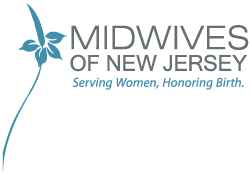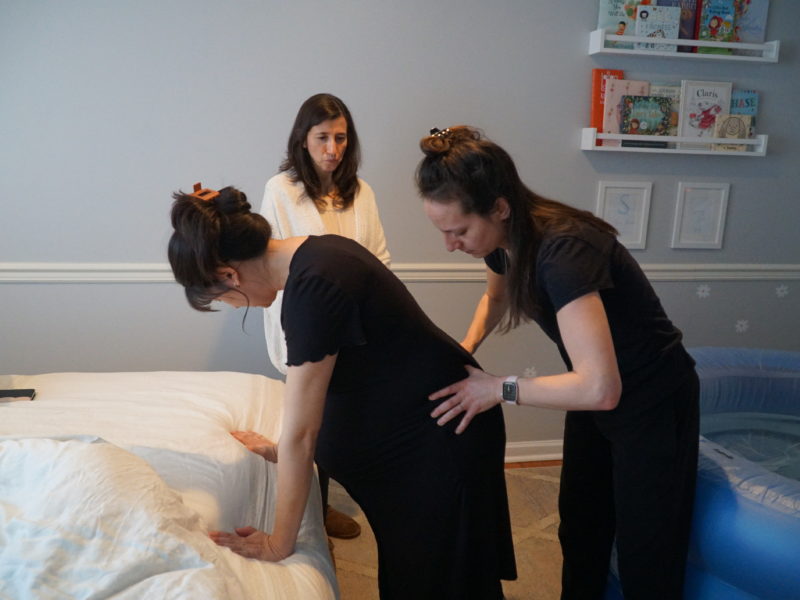5 Last Minute Ways to Avoid a Cesarean Birth
1. Carb Load in Early Labor
Labor is incredibly hard work and your body needs fuel. Think of your labor like running a marathon. As you start to feel contractions or when your water breaks, eat plenty of carbohydrate foods, you will store Glycogen in your liver. Glycogen molecules contain large amounts of water so it becomes a good source of both fuel and fluids. You will use the Glycogen quickly in a longer labor so continue to consume sugars in labor; juice, milk and honey are good sources of energy in labor.
There is no reason for your hospital or physician to limit your oral intake to water or ice in labor. At the 2015 annual meeting for the U.S. anesthesiologists, research spanning more than 30 years was presented showing that women fare better in labor when allowed to consume light foods and drinks in labor. Oral intake may need to be restricted in the presence of certain risk factors like eclampsia, pre-eclampsia, obesity and use of opioids or epidural to manage labor pain and/or when a labor becomes prolonged or more complicated (Source 1), (Source 2).
2. Keep Walking
If you keep moving, labor pain is more tolerable. When you manage your pain better, you will be able to stay home longer and need less pharmacologic pain management. Once in the hospital, ask to walk without a fetal monitor. Continuously monitoring your baby’s heartbeat in labor has never been shown to improve outcomes for the baby or mother. The fetal monitor really works the best when a woman is laying on her back at a 45 degree angle. Laying in a bed is unanimously the most uncomfortable labor position. You have managed to get through 9 months without listening to every heartbeat, your baby will be fine in labor as you walk around for periods of time.
Walking keeps contractions coming and helps the baby rotate and descend in your pelvis. If your legs get tired, ask for a rocking chair or a birth ball. This way you can sit down but keep moving!
“Women who use upright positions and are mobile during labor have shorter labors, receive less intervention, report less severe pain, and describe more satisfaction with their childbirth experience than women in recumbent positions” (Source).
3. Avoid Admission to Hospital or Birth Center in Early Labor
A recent study in the Journal of Midwifery and Women’s Health showed that women expecting their first baby when admitted in early labor had an increased risk of Pitocin stimulation of labor and more than double the risk of cesarean section (Source). So knowing this, don’t be in any hurry to go to the hospital. You are safe laboring at home as long as your contractions are more than 5 minutes apart, you are not bleeding like a period, your baby is moving and your water has not broken. Of course, you may wish to give your provider an update on your labor symptoms but if she thinks you are ok at home, you are.
First labors often have a long, early phase that does not require hospital admission. With your provider’s permission, try to sleep. It is very helpful to get some extra sleep before the harder part of labor kicks in. Fatigue is your biggest enemy in labor and the further labor progresses, the harder it is to get any rest at all. Do not be afraid to take a sleeping pill like Unisom or Benadryl or even to drink a glass of wine. These medications are very mild compared to the big guns offered in the hospital and if you can get to the hospital in advanced labor feeling well-rested, you may not ever need the big guns. Do not fear that you might miss active labor after taking a mild sleep aid (or even a strong one for that matter). Labor is BIG. You won’t miss it!
If this is not your first baby, you can certainly anticipate a labor that progresses more quickly than the first one but again, don’t go to the hospital with your first contraction. Even if it is quicker, it will still grow and get stronger. Labor does not march in place. If you keep having the same contraction over and over, especially if it is at the end of the day, it could be a “tired” uterus. Sometimes your body is ripening your cervix for labor hours, days or even weeks before active labor begins. Don’t stay awake trying to make the labor stronger, relax in bed and see if you can get some sleep. If you wake up in the morning still pregnant, then it was not time. Otherwise, at some point the labor will be strong enough to get you back up out of bed.
4. Use Water for Pain Management
A study published in 2014 showed that women who used water immersion for pain management had significantly fewer cesarean births (Source). The shower is a good place for a woman to move into her labor land-the warm water, small space and white noise have a hypnotic effect on laboring women. Many women will not have the opportunity to use a tub once admitted to the hospital, so hop in your home tub before you are admitted. Fill the tub as full as possible, stop up the over-flow drain so you can be immersed as much as possible.
Try to relax. Relaxing will help you to conserve energy and will help you to progress through labor. If there is a tub at your hospital or birth center-GET IN!! If you don’t find it helpful, climb out and know that you had a nice bath. A shower is more likely to be available at your birth facility and they usually have unlimited hot water! Using water immersion and the shower will decrease the likelihood that you will have a surgical birth.
5. Invest in a Doula
There is a lot of evidence that shows that a labor doula decreases a woman’s risk for cesarean section. Even if you haven’t thought about this helpful labor attendant before now, it might not be too late. Hiring a doula is easier than ever! Refer to this site to research doulas in your area. Some doulas have a system that allows a woman to hire a doula even if she is already in labor! Bringing a doula will help you accomplish the 4 above steps. She is going to feed you, walk with you, help you get comfortable in your tub and hang out with you at home to help you decide the best time to go to the hospital and birth your baby.
Once a woman has a cesarean birth, she will never be low risk again. This increase in risk severely limits people’s choices in their labor and birth. It is not too late, even if you are already in labor, to make adjustments in your birth plan that will improve the safety and satisfaction in your labor and birth.








 Access to Midwives
Access to Midwives
